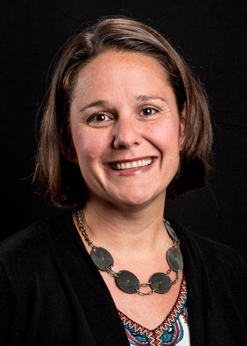“In the middle of every difficulty lies opportunity.”
-Albert Einstein
As a non-profit executive for more than twenty years, I joined the Parthenon Management Group (PMG) team having coordinated almost every type of event. I have planned and executed festivals, galas, golf tournaments, walkathons, dinners, fashion shows, auctions, product sales, fireside chats, recruitment weekends, and reunions. So when the COVID-19 global health crisis caused travel bans and a State of Emergency that threatened the future of my association’s revenue producing scientific conference, I enthusiastically said, “A virtual conference will be exciting, and I am ready to tackle a new professional challenge.”
I found myself questioning my enthusiasm over the next three weeks. However, with only three weeks to plan and execute the first ever virtual conference for the Midwest Nursing Research Society (MNRS), there was not much time for contemplation. The MNRS Executive Office team that consisted of one fulltime staff member and five part-time staffers had three weeks to move a live conference to a virtual platform with more than 1,000 conference attendees, 2 plenary speakers, 28 exhibitors, 500 posters presenters, and more than 40 scientific sessions running 6 concurrently at any given time. We needed a plan and swift strategic action.

Blog By Kelly Braniff
Project Manager
Using the tried and true association management acronym SPIE (Scan, Plan, Implement, Evaluate), the Executive Office team challenged the norm and accomplished the ambitious task of providing MNRS with a virtual experience that captured the essence of our physical conference.
Step 1: Scan
Having an in-depth knowledge of the association and the members was key to transitioning the conference to a virtual experience. The Executive Office knew that the most essential task at hand was providing a vehicle for members and students to present their science regionally to fulfill a requirement for graduation and tenure. Conference attendees depended on the annual research conference for networking, sharing new methodologies, and collaborating on research projects. In addition to assessing the needs of the association, the team took an inventory of our staff skillsets, internal support, and available technology.
Step 2: Plan
Once we knew what resources we had, what the members needed, and where potential gaps were, the Executive Office team was able to develop a plan that included securing a platform to host the size and scope of the virtual conference, and procuring an audio/visual company to support the technology needs of the attendees and presenters.
As per the Board’s direction, we maintained the current schedule as outlined by the Program Planning Committee and planned to run the full schedule virtually in real-time. After researching and pricing many software options, the Executive Office selected Zoom as the platform for our virtual conference. We ensured that each differing presentation format transferred to the virtual platform and adjusted the formats as needed. Additionally, we worked with our current membership and conference software provider, Joyn, to develop the ability to provide a virtual poster presentation session that provided digital poster viewing with links to allow for real-time science discussions. We also secured the services of AVSC to serve as our audio/visual and technical support during the launch of our first virtual conference.
Essentially, the planning step required daily team meetings, honest feedback regarding ease of use and accessibility for attendees, self-monitoring and editing of conference options to ensure the technology was manageable, and scrutinizing every conference offering to ensure the virtual conference would add value and provide essential opportunities for presenting, networking, and collaborating.
Step 3: Implement
The implementation step of the virtual conference could easily be relabeled as communication. During the three-week transition period, the Executive Office team devoted the bulk of their time to creating clear communication of the changes to everyone involved.
We communicated with the team daily. We communicated with the Board regarding the expectations of the virtual conference, and with the Program Planning Committee concerning the schedule and needs. We communicated with the presenters to confirm participation and consent to present virtually, and we communicated with our audio/visual/tech support regarding assignments, meeting room requirements, and anticipated pitfalls. We communicated with moderators about their roles and responsibilities, and we communicated with attendees to ensure timely connections and accessibility.
After creating Zoom meeting/webinar rooms for all the sessions, we added the Zoom links to our agenda planner in Joyn, as well as the mobile app and the online program book. We developed a schedule at-a-glance with the links and emailed the attendees daily with all Zoom links and room numbers. When we thought we were done communicating, we wrote more emails, we answered more questions, and we continued to enhance the website. The amount and depth of the communication regarding the conference cannot be overstated!
Before launching the virtual conference, the PMG team ensured every detail of the program was scheduled in the virtual platform with backup options in the event of technical or accessibility issues. We tested all Zoom links and launched training sessions for the presenters, moderators, and attendees. We developed and shared frequently asked questions and user guides, as well. We answered questions and more questions and even more questions, using each one as an opportunity to expand and enhance the information available to all conference attendees.
Needless to say, the three weeks we had to transition the conference flew by and once we launched the meeting, we continued to focus on communication. We shared daily emails with the conference attendees which included the links for each session room, we highlighted exhibit hours and poster sessions, and we shared calendar reminders with presenters and moderators. We ensured that we responded to attendee and presenter needs in real-time via email and phone. I cannot overemphasize communication as THE key element in implementing a virtual conference.
Step 4: Evaluate
The last step in the SPIE framework is evaluate. We are currently in the midst of attendee evaluations, team post-conference discussions, and A/V recaps. We anticipate learning much from these assessments. What I can share in the short term is that the program and schedule became our guiding documents. We used the schedule to redefine sessions, order an appropriate online conference platform, and hire A/V to support the concurrent technical needs. Another lesson we learned is that we underestimated the (human) energy requirements to host a virtual conference, and conversely the feelings of accomplishment it would produce. Finally, team dynamics and support are crucial. The PMG association management and meetings teams are collaborative, reliable, hard-working, and committed to excellence. Having a well-defined and a well-functioning team is essential to success.
The first ever MNRS virtual conference was not without imperfection. However, the professional PMG association management team approach, relying on SPIE, allowed us to pivot when needed, evolve when necessary, and improvise as required to ensure the success of the virtual conference.
As an executive director working for an association management company, my best advice in this new reality both during and after the COVID-19 pandemic is to stay calm, rely on your training and experience, and approach each new obstacle as a challenge and opportunity for professional growth. No one is exactly sure what the future of conference planning holds. However, as dedicated professionals committed to successful association management, we are being called to explore the new avenues and blaze the trails for the future of association management and conference planning.


